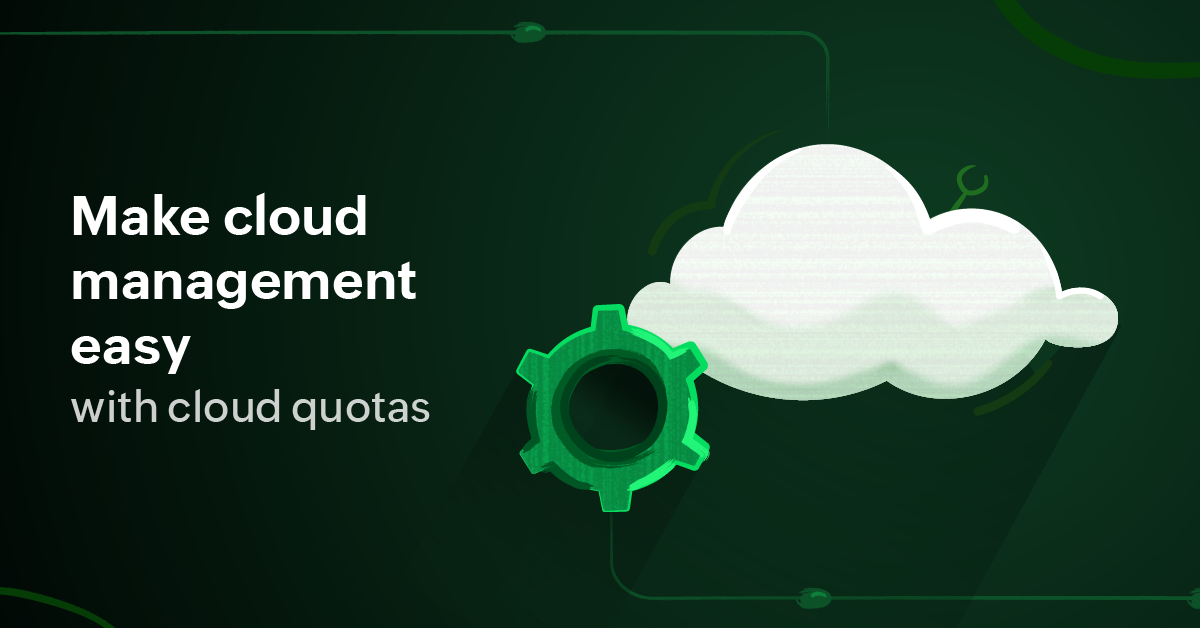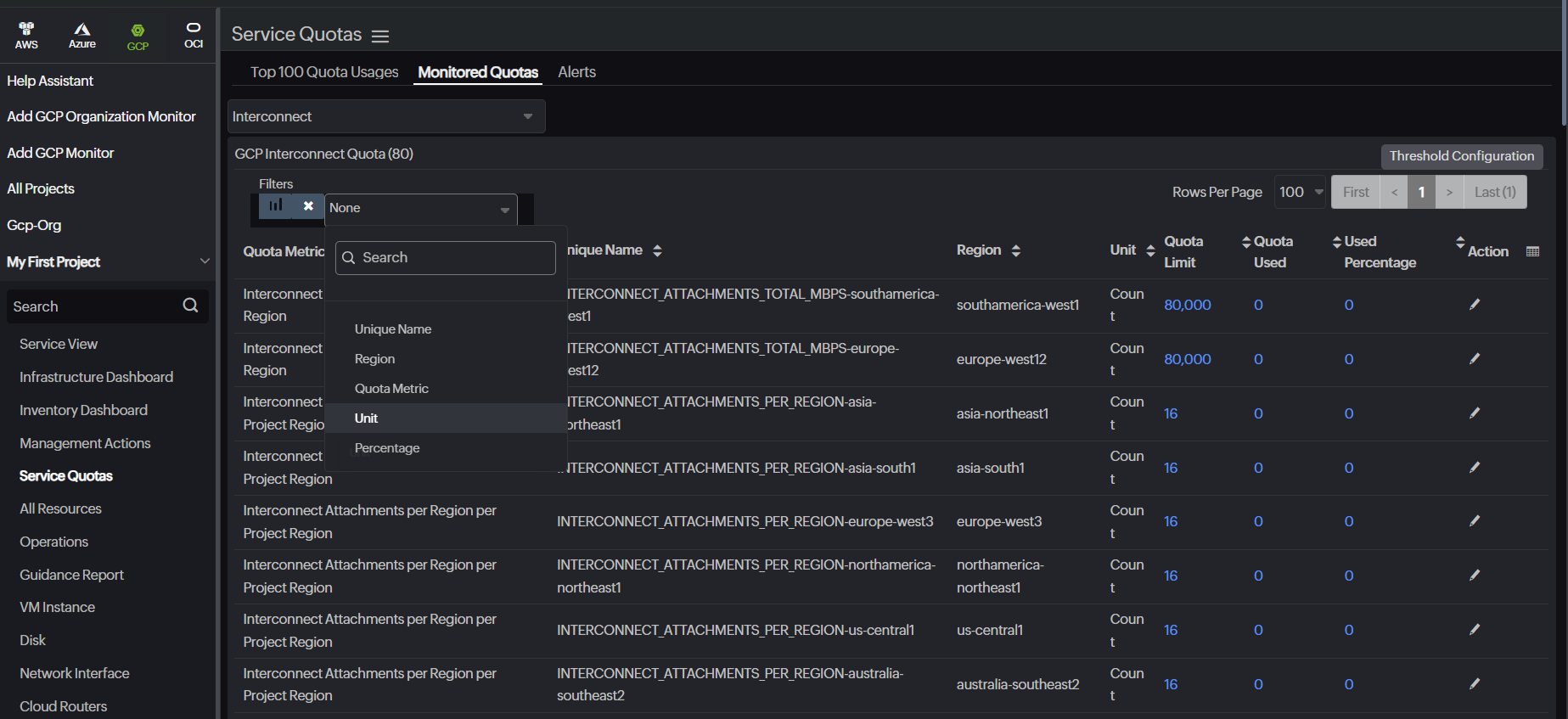Cloud quotas: How to make cloud management easy

In the past, a cloud architect's pain point was usually deciding between these two options:
- Over-optimize and face service interruptions.
- Give the organization's cloud users a free hand and face unpredictably huge cloud costs.
To tackle this confusion, major cloud service providers (CSPs) launched quotas (in their own words). To give you examples, here are the different terminologies used by the three major public CSPs:
- Google Cloud: Cloud Quotas
- Azure: Service limits, subscription limits, or Azure Quotas
- AWS: Service Quotas
The main ingredient of a well-oiled cloud setup that significantly impacts cloud operations is understanding and managing cloud quotas, also known as service quotas. Today, let us learn about cloud quotas, how they impact cloud infrastructure management, and a tool that is designed and built with just one idea: improving your cloud architecture.
What are cloud quotas?
One of the top five reasons why organizations are moving to the cloud is the ability to deploy even a 256-core VM in seconds. However, as much as it sounds helpful, one incorrect configuration is all it takes to spawn multiple high-spec VMs, resulting in:
- Serving no purpose.
- Firing up the cloud costs.
-
Making cloud resources unavailable in regions where they are actually required.
Cloud quotas are limits set by CSPs to control the number of resources a user can consume within a specific service or region. These limits apply to various resources, such as API request rates, the number of instances, and the storage capacity. The purposes of quotas are to ensure fair usage, moderate resource consumption, and maintain balanced service availability across users.
Types of cloud quotas
There are various types of quotas depending on the cloud provider and the services used. Different CSPs use different terminologies, but the basics are always the same:
Resource quotas
These are limits on the number of resources, such as VMs, CPU cores, and databases, that can be used. For example, a resource quota can help you not create VMs with more than 64 cores in a region where the load on servers is very low.
Rate quotas
These quotas manage the rate at which API requests can be made or data can be transferred within a certain timeframe. Rate quotas are beneficial when your cloud subscription has costs associated with the count of APIs.
Why are cloud quotas important?
In short, cloud quotas relieve you from constantly managing the cloud resource usage. Here are some reasons why the proper management of cloud quotas is important, especially when you are managing business-critical resources in the cloud:
Avoiding service interruptions
Exceeding quotas can result in denied requests or service interruptions, affecting productivity and business operations.
Cost management
The effective monitoring of quotas helps keep your cloud usage within permissible limits, preventing unexpected costs from overuse.
Resource optimization
By understanding quotas, organizations can distribute resources more efficiently, ensuring optimal performance and availability.
Security and compliance
A properly configured quota setup helps in maintaining security protocols and compliance by facilitating capacity planning and resource control processes.
Challenges in managing cloud quotas
Cloud quotas simplify cloud management, but managing cloud quotas is an intricate, complex task. Even veteran cloud architects face challenges in managing cloud quotas in these aspects:
A lack of visibility
A typical enterprise has an average of about 20 service types spread across multiple regions. Identifying and tracking all quotas across different services and regions can be difficult.
Dynamic environments
If your organization hosts its resources in the cloud, that already means its IT infrastructure is expanding exponentially along with its business. This directly translates to a rapid scaling up of resources, eventually requiring you to scale up quotas as well.
Manual monitoring
Continuous manual tracking is inefficient and time-consuming. This practice is a major contributor to potential faults and noncompliance.
Best practices for cloud quotas
Do not let the challenges in managing cloud quotas overwhelm you. Here are some best practices to keep your cloud infrastructure perfect:
- Continuously monitor resource usage to identify trends, then adjust cloud quotas accordingly to prevent potential shortages before they affect operations.
- Set up automated alerts for when usage is nearing quotas to manage potential overloads proactively.
- Regularly review and optimize resource allocations based on usage patterns and business requirements.
- Keep in touch with your technical account managers from CSPs to understand any changes to quota policies and negotiate custom quotas if needed.
Site24x7 + cloud quotas = an efficient cloud
Site24x7 offers an advanced cloud quota monitoring solution designed specifically for cloud architects and IT operations teams. With Site24x7 and your tech expertise, you can:
- Get a comprehensive overview of all your cloud quotas across multiple providers and services on one browser tab. Tool sprawl goes out the window.
- Monitor quota usage in real time to ensure you are always within limits, preventing disruptions.
- Receive automated notifications and alerts for usage nearing or breaching quotas to take immediate action.
- Use our built-in analytics tools to understand trends and optimize resource allocations effectively.
- Generate on-demand and scheduled reports to provide stakeholders with insights into quota usage and resource management strategies.

Enhance your cloud management strategies today with Site24x7’s intuitive, powerful cloud quota monitoring to keep your operations running smoothly and efficiently. For a demo or more insights, reach out to our experts and see how you can transform your cloud infrastructure management.
To help you understand our cloud monitoring suite, here are a few resources:
- Cloud monitoring capabilities of Site24x7
- Platform-specific cloud monitoring: Google Cloud | Azure | AWS | Oracle
- Set up cloud monitoring for Google Cloud | Azure | AWS | Oracle